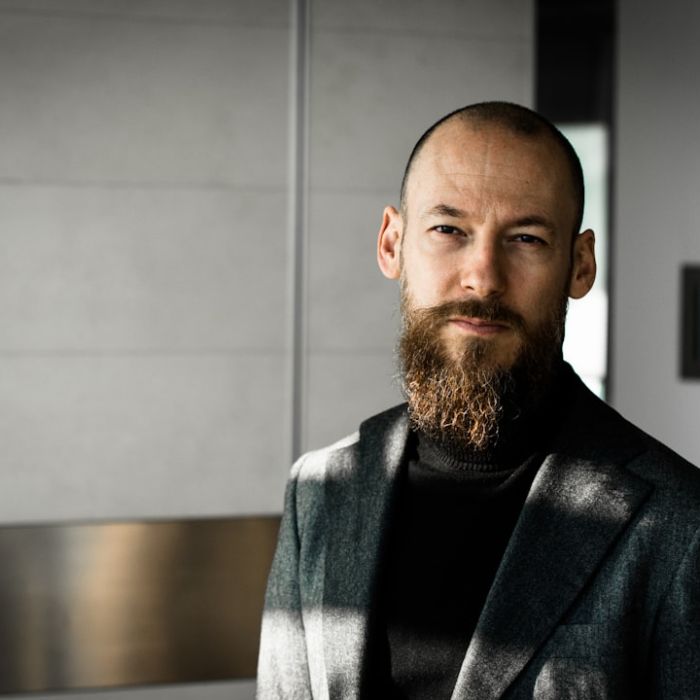Millions of men experience hair loss. Thinning hair, a receding hairline, or bald patches can affect not only someone’s appearance but also their confidence and self-esteem. Finding the right non-surgical hair replacement solution is an effective way to look and feel better.
In the past, hair restoration options included invasive hair plug surgeries that might not work or awkward-looking hairpieces that didn’t stay put.
These days, advanced technologies have elevated how you can regrow, replace, or restore hair. Hair restoration experts can craft custom hair replacement systems that are virtually indistinguishable from your natural hair. You can also take advantage of non-invasive treatments like laser therapy and topical serums to encourage new hair growth and reverse hair loss.
What Is Non-Surgical Hair Restoration and How Does It Work?
Non-surgical hair restoration refers to hair-loss treatments that don’t involve surgical hair transplantation. These treatments can run the gamut from medications to promote hair growth to custom, modern hair systems that camouflage large bald patches.
Some non-surgical hair restoration procedures are intended to stimulate hair growth and reverse signs of hair loss. Other treatments involve using micro pigmentation and hair weaving to add fullness and volume to your natural hair.
There is no one-size-fits-all prescription for non-surgical hair replacement. Choosing the right treatment depends on your:
- Degree of hair loss
- Goals for hair restoration
- Lifestyle
- Budget
You may benefit from a combination of hair replacement strategies to get the head of hair that makes you feel the most confident.
Non-Surgical Hair Restoration for Men: Common Treatments
Topical Solutions
Topical treatment for hair loss is one of the most popular options for hair restoration. Minoxidil, the active ingredient in Rogaine, is a topical solution that you apply directly to the scalp. It increases blood flow to the scalp and stimulates hair follicles to stay in the growth phase longer. You can buy topical minoxidil over the counter.
In addition to topical treatments, oral medications can help with hair loss:
- Minoxidil is also available in oral form, but it requires a prescription from your doctor.
- Finasteride, the active ingredient in Propecia, is another prescription oral treatment for hair loss that stimulates follicles to continue producing hair.
- Dutasteride is a prescription medication currently approved for treating an enlarged prostate. It can reduce the risk of DHT-related constriction of hair follicles. However, the Food and Drug Administration (FDA) has not yet approved it for treating hair loss.
Platelet-Rich Plasma (PRP) Therapy
Platelet-rich plasma (PRP) therapy is a regenerative medical treatment that promotes healing. It’s also considered one of the most effective hair restoration treatments.
During PRP therapy, your doctor will take a blood sample and rapidly spin it in a device called a centrifuge. This process separates platelets and plasma from other blood components. Your doctor then injects the platelet-rich plasma into the scalp, stimulating hair growth. Most people need an initial series of several treatments, followed by “touch-up” treatments to maintain the results.
Low-Level Light Therapy (LLLT)
Low-level laser therapy (LLLT) is a non-invasive treatment that involves exposing the scalp to safe levels of red light. This stimulates blood flow to the scalp and encourages new hair growth. It’s simple and painless, and some experts consider it the most effective non-surgical hair restoration treatment.
You can get professional LLLT from a qualified provider. Most people need multiple sessions. In addition, LLLT helmets are available for at-home treatments.
Scalp Micropigmentation
Scalp micro pigmentation is a specialized tattooing technique used on the scalp to disguise hair loss. It can give the look of fuller hair, reduce the appearance of a widening part, or mask thin patches.
Like eyebrow microblading, the treatment involves tiny needles depositing special pigment onto the scalp. Results are visible immediately, and no maintenance is required. The results can last up to 10 years without any maintenance.
Hair Systems for Men
Hair systems are non-surgical hair restoration treatments that integrate artificial hair with naturally growing hair. They can be fully personalized to meet your needs.
Hair weaving systems are a painless, instant solution that adds fullness to existing hair by attaching individual fibers to your natural hair. You can wash and style it normally and come in for maintenance every six to eight weeks.
Hair systems for more advanced hair loss involve creating a customized hair replacement system that adheres to the scalp. You can choose to maintain a hair system at home or have it professionally maintained every six to eight weeks.
Start Your Journey and Explore Hair Restoration Options
If you want to learn more about non-surgical hair restoration options, HairClub is here to help. Our hair loss consultants offer comprehensive hair and scalp evaluations, which allow them to recommend the best hair replacement solution to meet your unique needs and goals.
Reach out to us to learn how restoring your hair can change your life. Book a complimentary consultation with our experts today!
Non-Surgical Hair Restoration FAQs
How much does non-surgical hair restoration cost?
The cost of non-surgical hair restoration depends on the type of treatment you choose. When you meet with one of our hair restoration consultants, you can discuss your budget with them. They will help you select a plan that works for you.
Is there a way to regrow hair without surgery?
Some treatments like topical Minoxidil, laser therapy, and platelet-rich plasma can stimulate hair growth in areas with viable hair follicles. A doctor can help you understand if those treatments will work for you.
What is the best non-surgical hair replacement system?
The best non-surgical hair replacement system is the one that gives you the results you want. Every treatment option can improve the look of thinning hair. Choosing the treatment or combination of treatments that works with your needs, lifestyle, and budget will ensure you get the best results.



